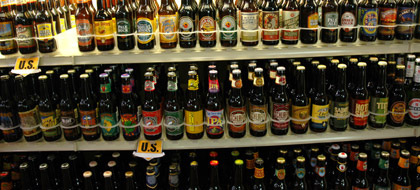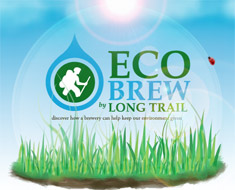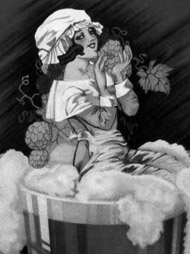Details from “Project Genome,” the study that revealed all about wine “image seekers,” help tie together last week’s posts about training robots to taste wine, coming up with a tasting vocabulary, and “discovery” in the marketplace.
Beer companies should be just as concerned about “overwhelmed” shoppers as winemakers — maybe more, because beer is supposed to be the friendly-no-pretenses product, right? And Project Genome found that nearly one in four (23%) of wine shoppers feel overwhelmed. As a result they buy less than their share (13%) of wine.

Constellation CEO Jose Frernandez offered his take on the results: “We’ve under-communicated to these [Overwhelmed] consumers. … If we do nothing, today’s Overwhelmed will be tomorrow’s Overwhelmed.”
He went on to suggest the fact that most people who work in the wine industry are Enthusiasts may account for the industry’s failure to understand Overwhelmed consumers. Enthusiasts account for 12% of buyers but buy 25% of the wine. They walk the walk, but they also talk the talk.
And maybe that’s not always the best thing.
I thought of this yesterday when a friend was over helping me fix our pinball machine. He likes to hang out when I brew beer, and that’s how he got started making his own wine. Nothing fancy, but good enough to win a couple of ribbons in the State Fair. He keeps Coors Light in the fridge at home, but something else is a welcome treat. I know that he enjoys a touch of diacetyl in some beers, Sierra Nevada Pale Ale is as hoppy as he likes, that he thinks sour sucks (that could be a lambic or a badly packaged beer), and that Samuel Adams Cream Stout hits the spot.
So when I hand him a beer I don’t suggest he should be looking for tropical notes, toffee-like flavors or — heaven forbid — aromas of newly-mown lawn. I just hand him the beer. He likes it or he doesn’t.
This is hardly new. It has been happening in brewpubs for more than 25 years, in beer bars that offer sampling sizes, at beer festivals … communication in its most basic form.
– From the Omaha City Weekly: “Over the past year the quality of Omaha’s beer scene has improved greatly. While not every bar, restaurant and retail store has jumped on board a great deal have increased their selection of craft beer.” Did you really envision there would be a time we would be identifying the Belgian beer of Omaha? (It’s St Bernardus Abt 12, BTW.)
– That was some line Saturday at Port Brewing/Lost Abbey for the release for The Angel’s Share.
 The Session heads across the Atlantic in April, with Stonch hosting Round #14 from his London stomping grounds.
The Session heads across the Atlantic in April, with Stonch hosting Round #14 from his London stomping grounds.

 Merlot does not suck.
Merlot does not suck.